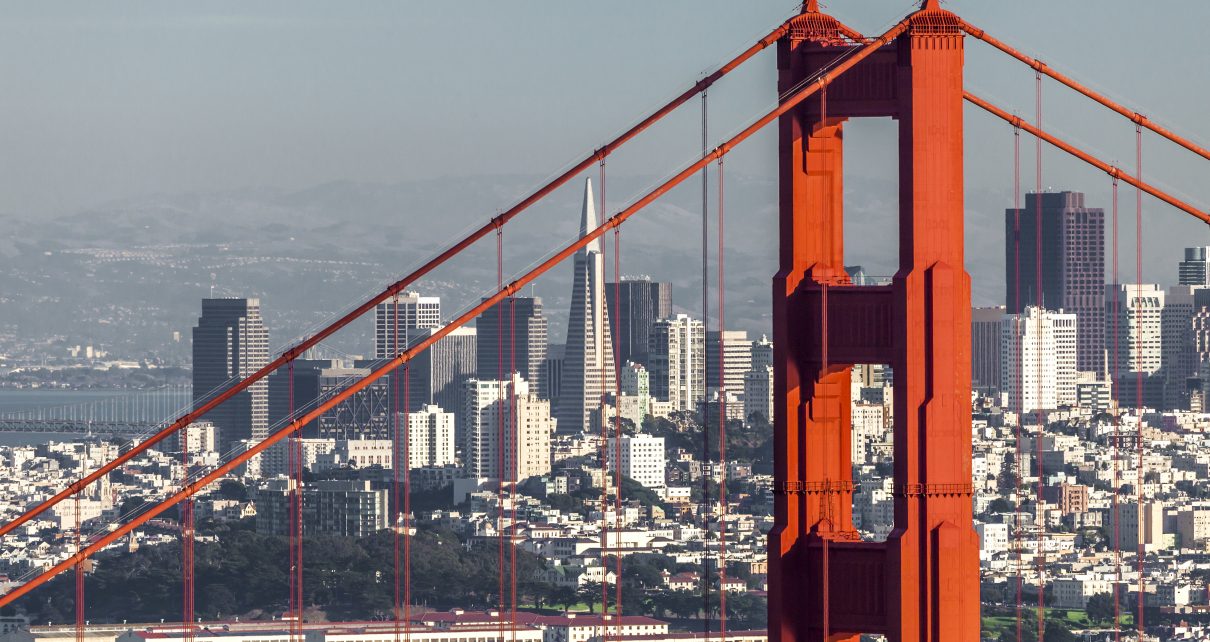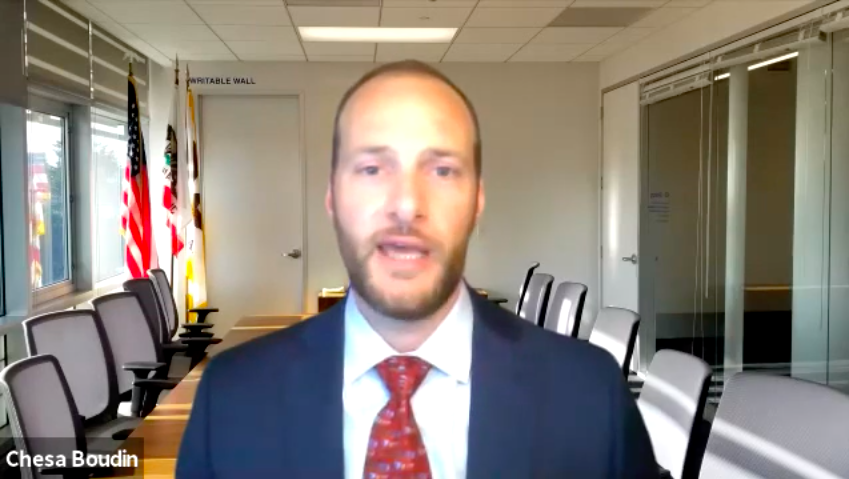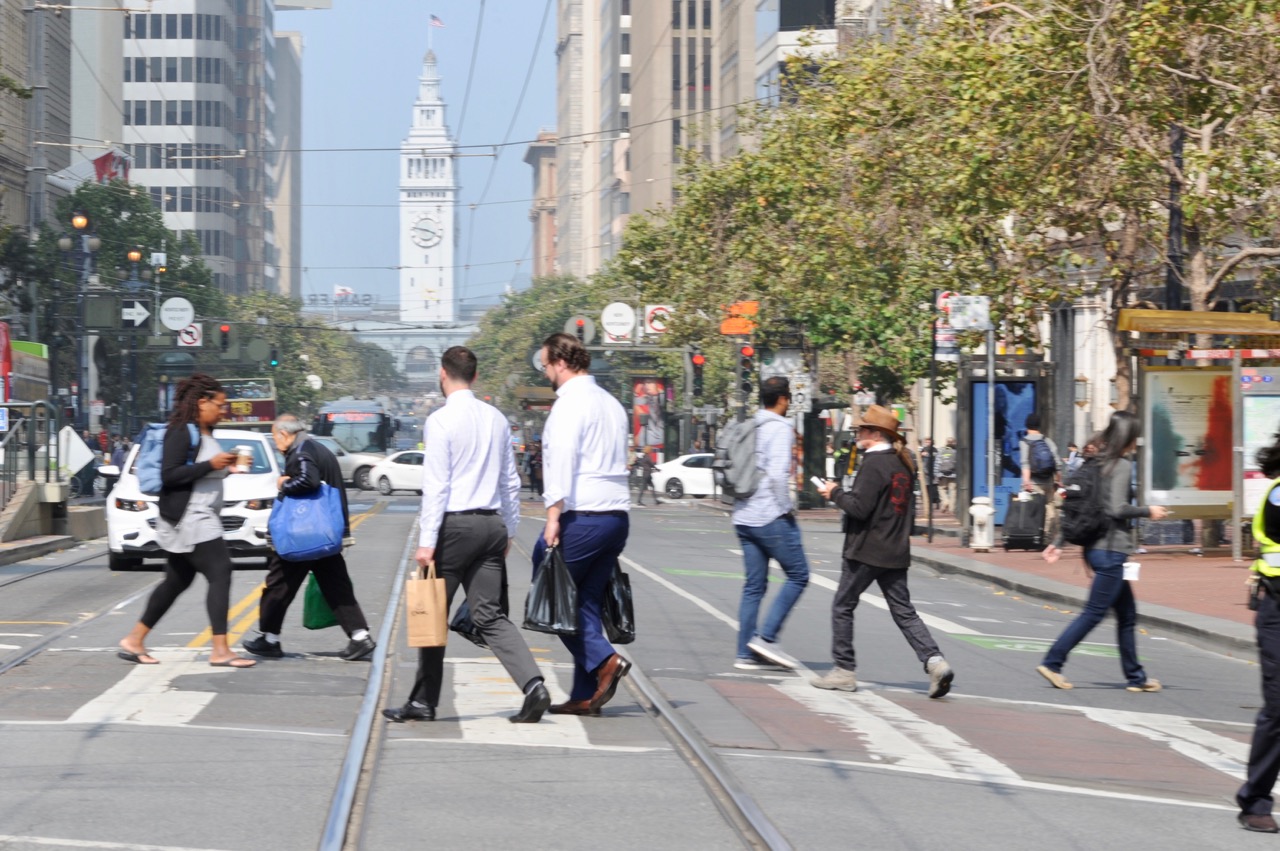
San Francisco from San Francisco Headlands and Golden Gate bridge, San Francisco, CA. (Photo: Kropic1/Shutterstock)
San Francisco Considers Establishing a Red Light District?
The City By the Bay lurching further toward Gomorrah
By Martin Marks, February 11, 2023 7:00 am
It is certainly no secret that San Francisco–once known as America’s most beautiful city due to its preeminence in commerce, the arts, sports, tourism, architecture etc.– has gained notoriety for its spiraling descent into a metropolis now better known for its filth, homelessness, crime, illegal drug trade and use, and all other facets of a decaying society. CaliforniaGlobe.com recently and aptly reported on the city’s failing political policies which have led to this decay with a leading reference to Florida’s Governor Ron DeSantis labeling San Francisco as a “dumpster fire.”
Yet, just when you thought San Francisco could not conceive of policy that would further nudge the City By the Bay closer to a present day manifestation of the Old Testament city of Gomorrah, some officials and community activists are now advocating for the creation of a Red Light District within the city’s confines. For those unfamiliar with the term, a Red Light District is a specifically designated area where ladies or gentlemen of the evening—or those identifying as such–can ply their wares in the business of selling sex without the risk of running afoul of the law and all that might entail. At one time, potential clients desiring to purchase sex would identify a window with a red light or lantern and know they had found the retail establishment with the services they sought.
Illegal prostitution is nothing new in San Francisco. In fact, it apparently is growing more rampant in parts of the city to the point where some city officials are looking to corral it. In particular, the Mission District is grappling with solutions to, at the very least, curtail what has become “bumper to bumper traffic” as clients cruise the street to connect with prostitutes. Barriers are being installed on Capp St. with the intent of diverting traffic away from or at least slowing it down in the besieged area. More likely, the traffic barriers would just move the cruising for the sex industry to another nearby location.
City Supervisor Hillary Ronen, while in favor of establishing a city Red Light District through local ordinances, desires to take it several steps forward by soliciting state legislators to draft a bill that would presumably decriminalize or even legalize sex work for the entire state of California. She said:
“I do feel that society’s acceptance and ability to get away from the morality issues is growing. Resolutions at the Board of Supervisors are reflections of the board’s goals or ideals, and don’t carry the weight of a legislative mandate.”
Others just seem to want the sex trade out of what is essentially a residential area where residents are fearful to walk their own neighborhood due to the potential violence and other ramifications that the sex business brings with it. One such resident is Lyn Werbach a member of and advocate for the Central Mission Neighbors. She favors establishing a designated Red Light District away from residential neighborhoods to a more commercial area. Yet, even Ms. Werbach recognizes the immediate stumbling block:
“I’m doubtful any district would welcome this activity,”
This latest foray toward establishing legalized prostitution for San Francisco is not its first. Most recently, Proposition K appeared on the ballot in 2008 which would have decriminalized the sex trade. Then-San Francisco Mayor Gavin Newsome and then-District Attorney Kamala Harris both opposed the proposition and it was decisively defeated by a 60-40% margin.
On the surface it might seem reasonable to consider decriminalizing or even legalizing prostitution—infamously known as the world’s oldest profession—as many have considered the activity as a “victimless crime.” A minimal understanding of this longstanding trade and apparently burgeoning industry would verify that prostitution is hardly victimless.
In their 2018 report, the Foundation Scelles, an organization established to report on and combat worldwide sexual exploitation, estimated that there are now approximately 1 million prostitutes in the United States. More than half of these sex workers began in the trade before they were 16 years of age with a vast majority of them experiencing sexual abuse as a precursor to entry into prostitution. Nearly all experience some type of exploitation or abuse at the hands of their pimps. They are six times more likely to die by disease or violence than the general population and far more likely to be involved in and addicted to illicit drugs.
Perhaps most alarming is the increase in human trafficking for the purposes of exploitation in the sex industry. Young, and many legally underage girls are cajoled or threatened away from their families—a significant number from foreign nations–and extorted into the sex trade under the threat of violence or worse. More and more, young boys are facing this same living hell.
Victimless? Rampant spread of disease, drug abuse, extortion, and violence associated not only with the prostitutes themselves, but also with their pimps, their clients and the residents of neighborhoods where the sex trade takes place is hardly victimless. Add on top of that, the growing scourge of international human trafficking. Victimless? Methinks not.
Instead of decriminalizing, legalizing, or attempting to compartmentalize the sex trade in San Francisco or anywhere else for that matter–which will do nothing to stem the tide of all the aforementioned deleterious societal ills associated with the trade—perhaps it is worthy to consider another approach.
Consider the Swedish Violence Against Women Act or Kvinnofrid of 1998. which holds that those women selling their bodies for sex were to be considered actual victims of a crime and those purchasing that sex or facilitating it are to be considered the perpetrators of that crime. Extra emphasis was placed on bringing down those involved in human trafficking leading to prostitution.
Apparently, the Swedish approach has been successful with reports that over the last two decades since the law’s inception the number of prostitutes in Sweden are down by 80%. With that, reports of corresponding exploitation, abuse, and violence against these women are precipitously down as well. Additionally, these women have been far more willing to work with police to identify their pimps, violent clients, and those involved in human trafficking so prosecution could take place.
San Francisco—predictably—appears to be on the precipice of a different approach. If successful, the once most beautiful city in the nation will deservingly bolster its reputation for increasing ugliness–on so many levels– it has garnered in recent years.
- Vice President Vance Visits The Golden State - February 22, 2025
- Is DEI Ready To DIE? - January 4, 2025
- Just How Effective Was The Abortion Debate in The 2024 Election? - November 18, 2024





Prostitutes probably have more integrity than Democrat Supervisor Hillary Ronen and the rest of the Democrats on the SF Board of Supervisors?
While the number of prostitutes in Sweden may be down by 80% since the passage of the Swedish Violence Against Women Act or Kvinnofrid of 1998, Amnesty International reported that Sweden has the highest incidence of reported rapes in Europe but the lowest conviction rate, and worsening levels of violence against women. About 58% of men convicted in Sweden of rape and attempted rape over the past five years were born abroad, according to data from Swedish national TV which also found that more than eight out of ten convicted offenders were born in another country while 40 per cent of these had been in Sweden for a year or less. Sweden probably has as many problems caused by leftist globalist politicians as San Francisco does?
Hillary Ronen is as stupid as they get if she believes we can legalize prostitution and then confine it to designated *red light districts*.
Lock-step with UN/WEF, trying to implement the same in NYC… Klaus is over, WEF is over, UN is over, WHO is over.
Newsom and his ilk will keep trying, but they will fail and fall…. relegated to the Pit.
Would that cause Nevada to extend legalization to their entire state?